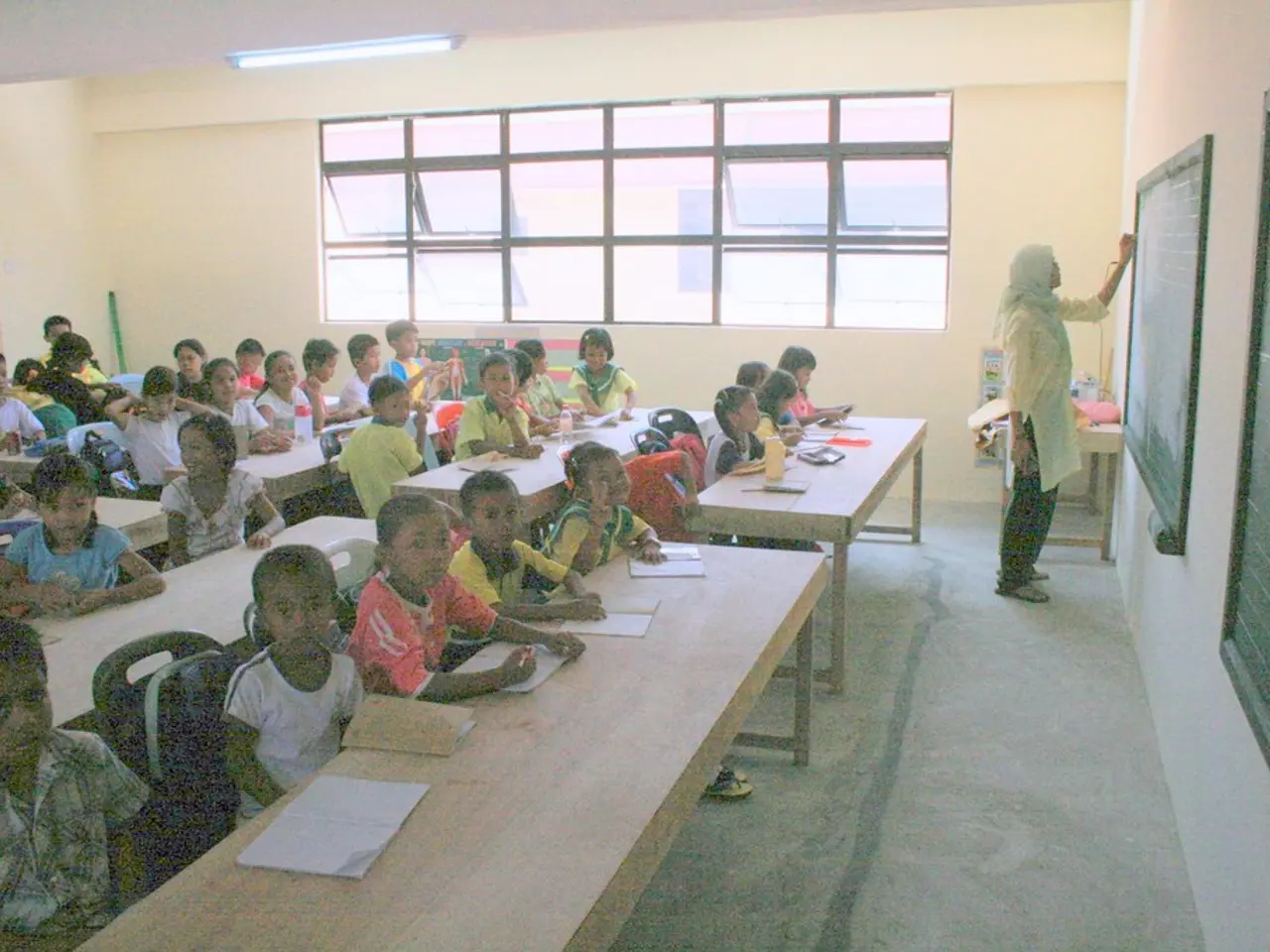Main Focus of Most Autism School Inclusion Programs Centers on Altering Students Instead of Classroom Adjustments
In a groundbreaking study, researchers have reviewed over 230 experimental studies on interventions for autistic students in mainstream classrooms, spanning 17 years and 59 countries. The review, published in Autism (2025), highlights the effectiveness of current interventions, but also underscores the need for a more unified approach in measuring their success.
Effectiveness of Current Interventions
The study reveals that interventions showing promise are those that foster collaboration among educators, speech therapists, occupational therapists, and psychologists. This interdisciplinary teamwork creates comprehensive, individualized strategies that address communication, sensory, and behavioral challenges holistically.
Most interventions focus on developing autistic students' social skills, communication, and adaptive behaviors. Structured, predictable classroom environments using visual aids, routines, and sensory supports also contribute to positive learning experiences and personality development among autistic students.
There is growing recognition that inclusion involves adapting classroom environments and school cultures, not just changing student skills. This includes teachers' attitudes and knowledge, classroom design, curricula adaptations, and school policies fostering participation for all learners.
Factors Contributing to Lack of Consensus on Measuring Success
Despite the promising findings, there is no clear consensus on how to measure the overall success of these interventions. The study identifies several reasons for this, including:
- Measurement heterogeneity: Studies use a wide variety of over 140 different standardized tools, most unique to single studies. Many tools focus on autism symptoms, IQ, or adaptive behavior rather than direct measures of inclusion, participation, or wellbeing.
- Diverse stakeholder priorities: Researchers often prioritize early skill acquisition and symptom reduction, while autistic individuals emphasize teacher attitudes and supportive environments. Parents focus more on mental health and emotional wellbeing, leading to differing views on what outcomes matter most.
- Contextual influences: Political, cultural, economic, and legal factors heavily influence which interventions are feasible and how success is interpreted.
- Underrepresentation and variability: Many studies underrepresent autistic individuals with intellectual disabilities or profound autism, whose needs and outcomes differ significantly from those with higher cognitive abilities.
- Lack of integrated models: There is a scarcity of integrated service models that combine communication, behavioral, and mental health supports across school and community settings, limiting the ability to comprehensively assess impact on broader developmental trajectories.
In conclusion, while interventions that are collaborative, individualized, and inclusive of environmental modifications show promise in supporting autistic students in mainstream classes, the complexity of autism, diversity in intervention approaches, varying stakeholder values, and methodological inconsistencies contribute to the ongoing lack of consensus on how best to measure and define successful inclusion. Future progress depends on standardizing meaningful outcome measures, adopting universal design in education, and embracing holistic, context-sensitive evaluation frameworks. This means investing in teacher training, systematically monitoring inclusion and participation, and prioritizing environmental adaptations over expecting students to fit rigid educational models.
- The effectiveness of interventions for autistic students lies in the collaboration among educators, speech therapists, occupational therapists, and psychologists, promoting comprehensive and individualized strategies that cater to communication, sensory, and behavioral challenges.
- To ensure positive learning experiences and personality development, interventions often focus on developing social skills, communication, and adaptive behaviors, while also emphasizing structured and predictable classroom environments using visual aids, routines, and sensory supports.
- Inclusion of autistic students in mainstream classrooms demands not only adapting student skills but also adapting classroom environments, school cultures, teachers' attitudes, and school policies to foster participation for all learners.
- Measurement heterogeneity, diverse stakeholder priorities, contextual influences, underrepresentation and variability, and lack of integrated models are factors contributing to the lack of consensus on how to measure the overall success of these interventions.
- Future progress in the field of autism education calls for standardized meaningful outcome measures, universal design in education, and holistic, context-sensitive evaluation frameworks, emphasizing teacher training, systematic monitoring of inclusion and participation, and prioritizing environmental adaptations.
- Mental health and emotional wellbeing are among the key concerns for autistic individuals, thus research, education, and mental health professionals should work together to address anxiety and stress related to autism, contributing to better mental health outcomes and overall well-being.




